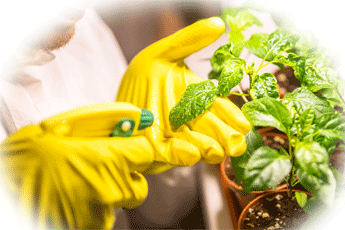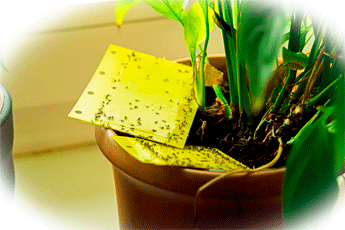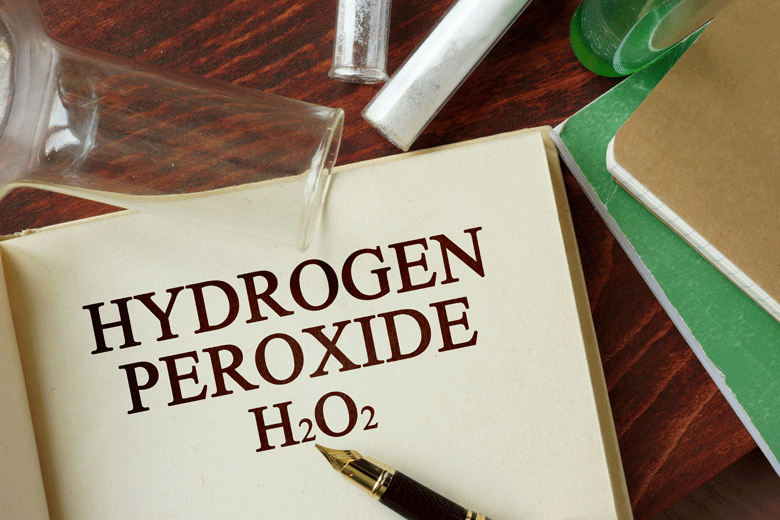H2O2 and Chillies
Hydrogen peroxide is a combination of hydrogen and oxygen. In essence, it is oxygenated water. It is a clear colourless liquid, resembling water, but is slightly thicker and denser. It can have a pale blue colour in its pure form. Hydrogen peroxide comes in various concentrations, from 3 percent to 100 percent. In its lower concentrations, it is used domestically as an antiseptic, a component in bleach, a water purification agent, and as an ingredient in cleaning products. At these lower concentrations, hydrogen peroxide also has many beneficial uses in growing Chillies
It is a pest killer that hydrogen peroxide comes into its own in growing Chillies. At a three percent concentration level, it can be used to kill fungus gnats. Fungus gnats are a constant source of bother in growing Chillies. Not only are they annoying, but in their adult form fungus gnats pose a risk to seedlings. They can carry pathogens like Pythium, which cause damping off. Damping off is a condition that causes seedling stems to become weak, causing them to topple over. Once damping off takes hold, it can rapidly spread and wipe out whole batches of seedlings. Is thus something to avoid. And this is where hydrogen peroxide steps up to the plate
While hydrogen peroxide can be used to kill pests, it is not a chemical pesticide in the stricter sense of the term. Once it has done its work, it breaks down into its main components – water and oxygen. It is almost that it has been there to perform a task, and then it disappears, without leaving any sign of it ever having been around
Killing pests and promoting growth

Making the solution
To use it for killing fungus gnats , mix one part of hydrogen peroxide to four parts of water. A stronger concentration of nine percent hydrogen peroxide can be used, but it will need to be diluted at the ratio of one-part H2o2 to six parts waters. At these levels of concentration, fungus gnat eggs, and larvae will get killed without harming your plants.
To use h202 for this purpose, make up the solution of hydrogen peroxide and pour it directly over the top of the soil of the plants in a seedling tray insert. Allow the solution to seep through the drainage holes in the bottom of the drainage holes in the seed. Wait ten minutes, and then follow the same procedure for a second time. This should be sufficient kill of any larvae and eggs present in the compost. However, if infestation is still noticed, allow the top layer of the compost to dry out and apply the solution in the same way as before. Carry on doing this until all signs of fungus gnats have disappeared. Thereafter, treat your plants every couple of months to keep infestation away. When used in combination with measures like sticky fly paper or cider vinegar , this treatment is effective.
of months to keep infestation away. When used in combination with measures like sticky fly paper or cider vinegar , this treatment is effective.
What’s more, your plants will love the treatment. In addition to its use as fungus gnat insecticide, hydrogen peroxide can also be used as a general pick me up for plants. After applying the treatment mentioned above, you will notice renewed vigour in your plant’s growth. Any remaining solution in the soil will break down into water and oxygen, which your plants will love
When a fungus gnat problem is under control, hydrogen peroxide can be used intermittently as a foliar spray. Spraying a solution of 3 percent hydrogen peroxide mixed at a ratio of one part H2O2 will act as a “fertiliser” to encourage vigorous growth. It is not really a fertilizer, as such, but can boost plant growth by aerating the roots.
In addition, hydrogen peroxide will kill soft-bodied peats like aphids and spider mites. Make up a solution of half a cup of three percent hydrogen peroxide, and combine it with two tablespoons of rubbing alcohol with a quarter of a teaspoon of dish-washing liquid. Spray this onto the leaves of your plants, particularly the underside, and your problem will disappear.
Another use for hydrogen peroxide is in preparing seeds for starting. Soaking seeds in H202 thins the walls of seeds shells in the same way that passing through a bird’s digestive does. This promotes easier germination. To do this, one tablespoon of 3% H2O2 needs to be mixed with one cup of water. The seeds need to be soaked for thirty minutes in this solution. They then need to be washed in fresh water and planted.
Are there any dangers to using Hydrogen Peroxide?
Used in the recommended dosage levels, Hydrogen Peroxide posed no risk to plants. There are however certain hazards to using it, particularly at higher concentrations. The hazards of using hydrogen peroxide at the 3 percent level are less. Some people even use food grade 3% hydrogen peroxide as a mouth rinse and as an antiseptic. Hydrogen Hydroxide should never be swallowed. It causes irritation to the mucous membranes of the stomach as it decomposes
Always exercise caution when using it at any concentration. It is always advisable to wear gloves when using hydrogen peroxide, regardless of its strength. It can cause skin irritations. Also, be careful not to rub your eyes after being in contact with it, as this can also cause irritation. Also consider you consider that hydrogen peroxide is used as an ingredient in bleach. It will create white marks on your clothing if it comes into contact with the solution
Finally
Hydrogen hydroxide has a shelf life, It will expire after one to six months once opened. Unopened it will last for three years. After is passed its shelf live it will need to be disposed of. This can be done by following these directions: Does Hydrogen Peroxide expire.
Disclaimer.
This information is provided for informational purposes only. It should be used entirely at your own risk. The blog and the author don’t accept any responsibility for any accident or injury, or damage caused directly or in part, from following any information on this website.

